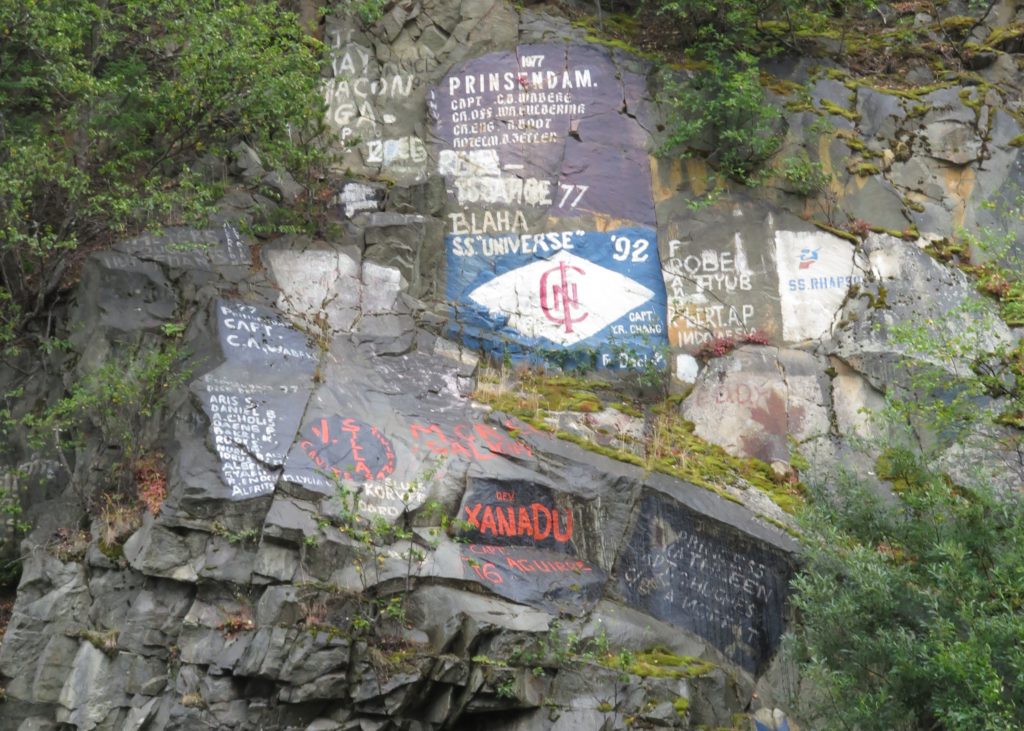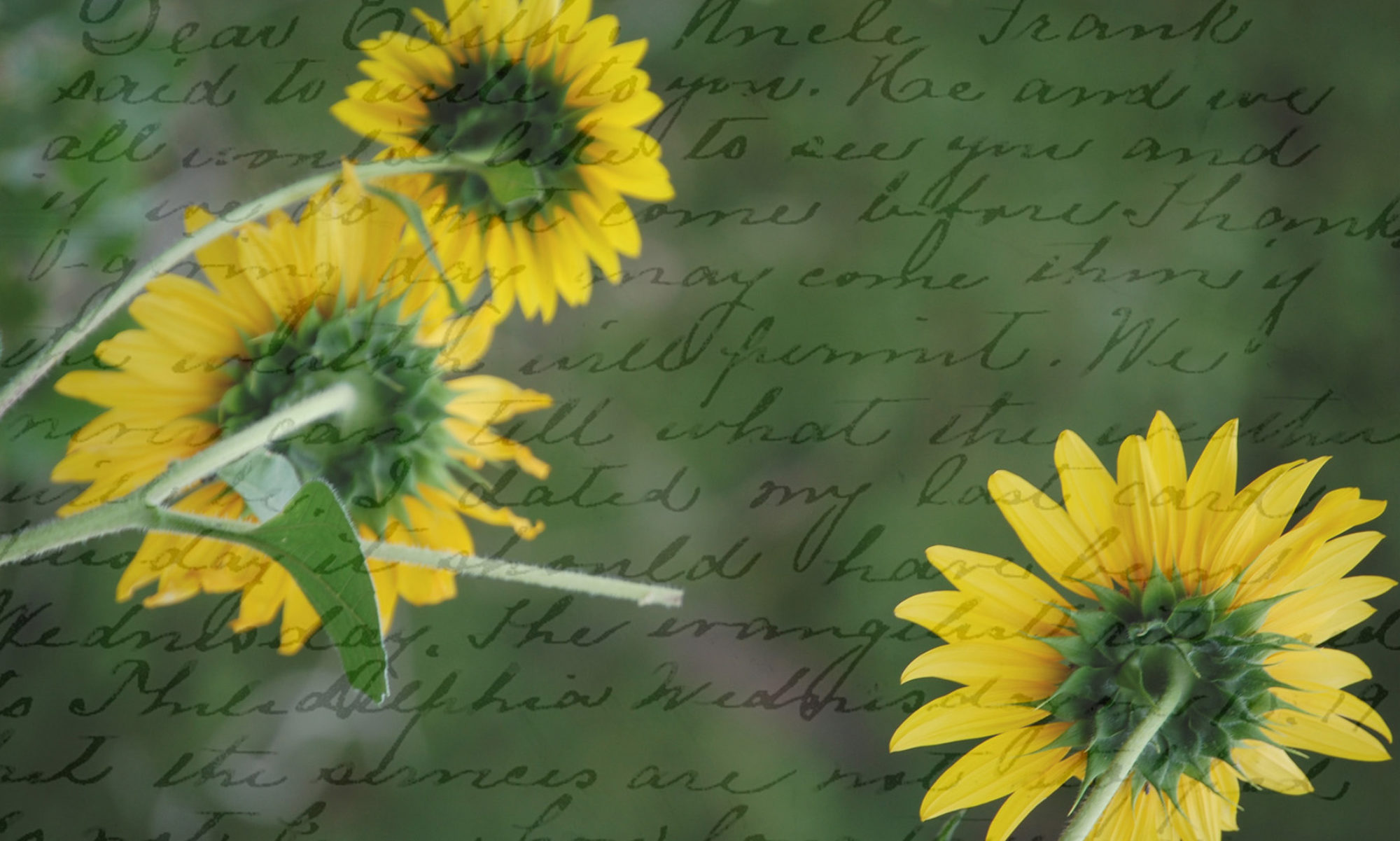Subscribe at the right for a monthly post with writing explorations for creating your own ecobiography.
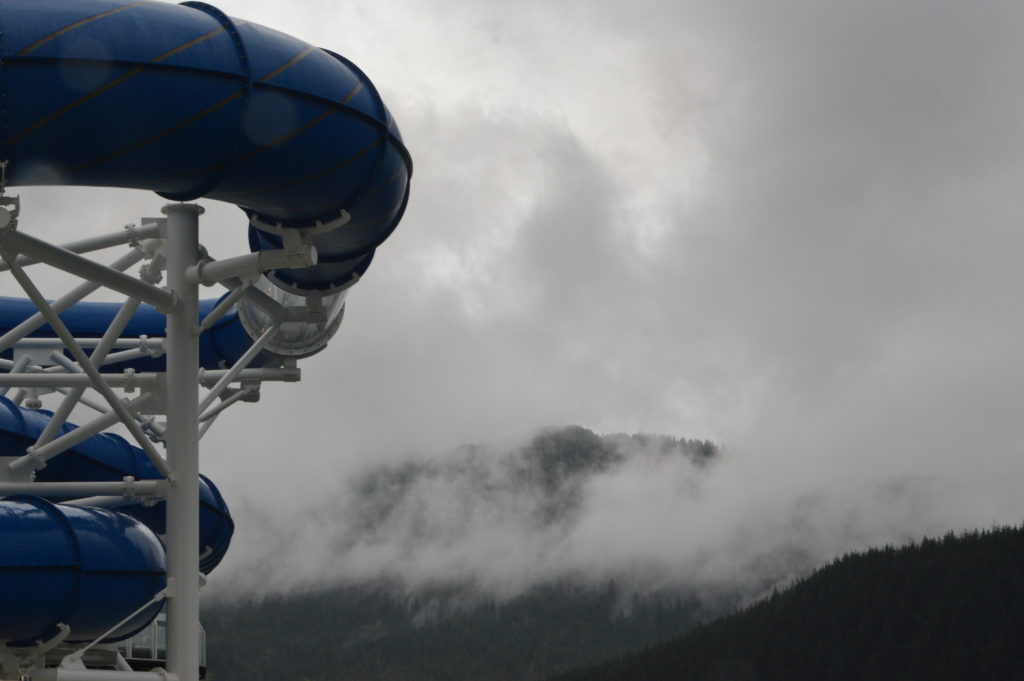
Alaska is a vast land of deep forests and wild oceans that provide habitat for some of the world’s most charismatic creatures and livelihood for humans rugged enough to weather its harsh climatic and economic conditions. On a nine-day cruise of the Alaskan Inside Passage with family to celebrate my parents’ 60th wedding anniversary, I was continually struck by the disjunction between the fierce beauty of the natural environment and the manufactured consumerism of the gigantic ship on which we traveled. Like all tourism to areas of ecological preservation, Alaskan cruises are paradoxical in that the boat is invasive and even destructive of the very thing upon which it depends: Alaska’s wildness.
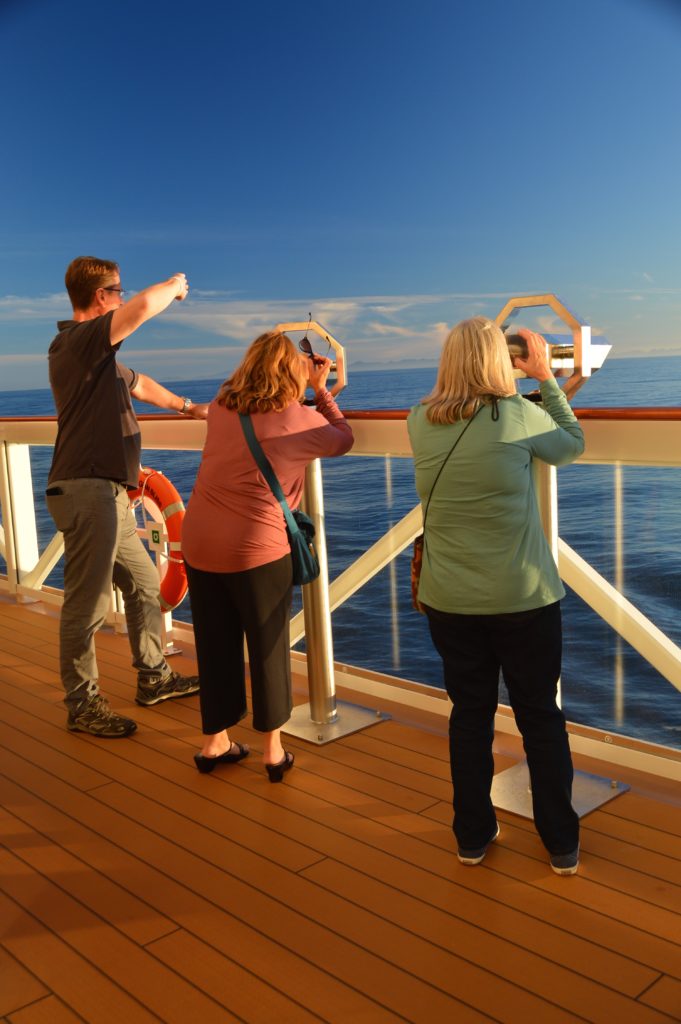
I call this picture “What are these people looking at?” As family members are looking, in fact, at the sea and sky at the southern end of the Inside Passage, I caught the gorgeous golden glow of the setting sun reflected against the ship. While they peered through the viewers, I noticed the light’s intensity and quickly snapped the shot. I haven’t done anything to the camera or photo to get these colors. Even though it all looks artificial, the air, light, and water form the natural environment engulfing the ship, an eerie juxtaposition.
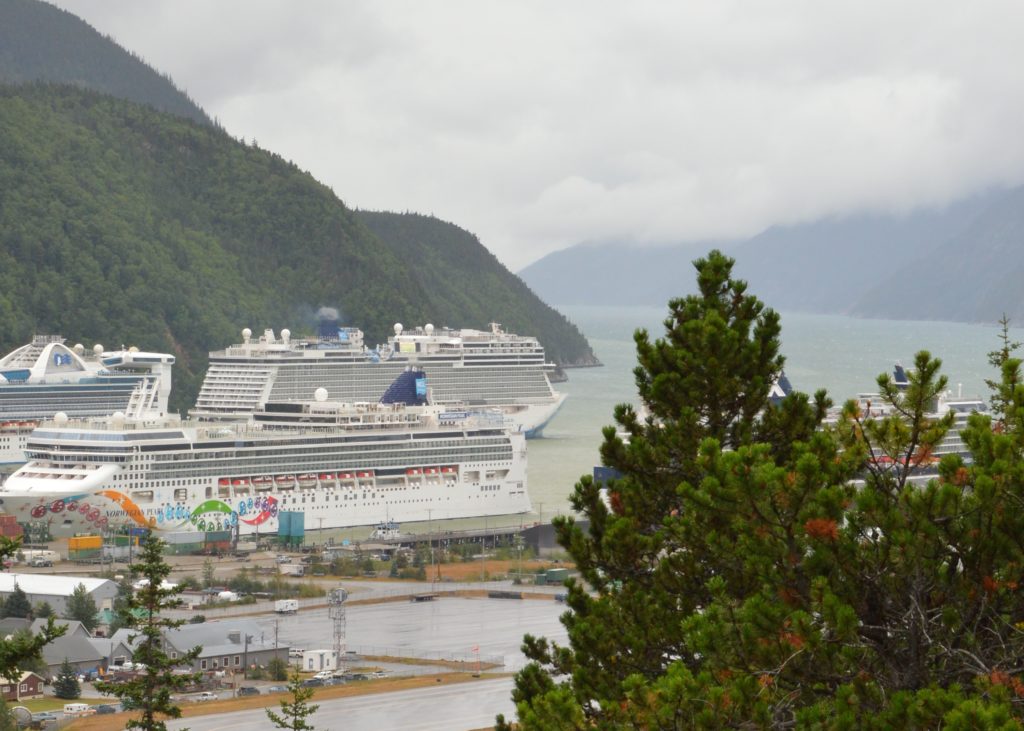
My own participation in the tourism paradox made me uncomfortable, but I went on the cruise to be with my parents, who at 80 needed the comfort of the boat to travel to a state they had long wanted to visit. I loved being on the water but not on the ship; stops at the ports of Ketchikan and Skagway for hikes and tours outside the established tourist consumer areas were highlights for me, although these encounters were still tourist “excursions,” as they’re marketed, and therefore still part of a manufactured experience.

As I write about my time in Alaska, I’m trying to differentiate between my discomfort with the ecologically unsustainable aspects of the trip (not only the waste from the ship, but the ship’s very presence in Alaskan waters) and my gratitude for the opportunity to witness a small part of the state’s ecological wonders, maintained and supported by the indigenous knowledge and customs of its Native peoples that provide yet another—and more ecologically beneficial–juxtaposition of human and nature. This seems a big undertaking—but it’s a big state.
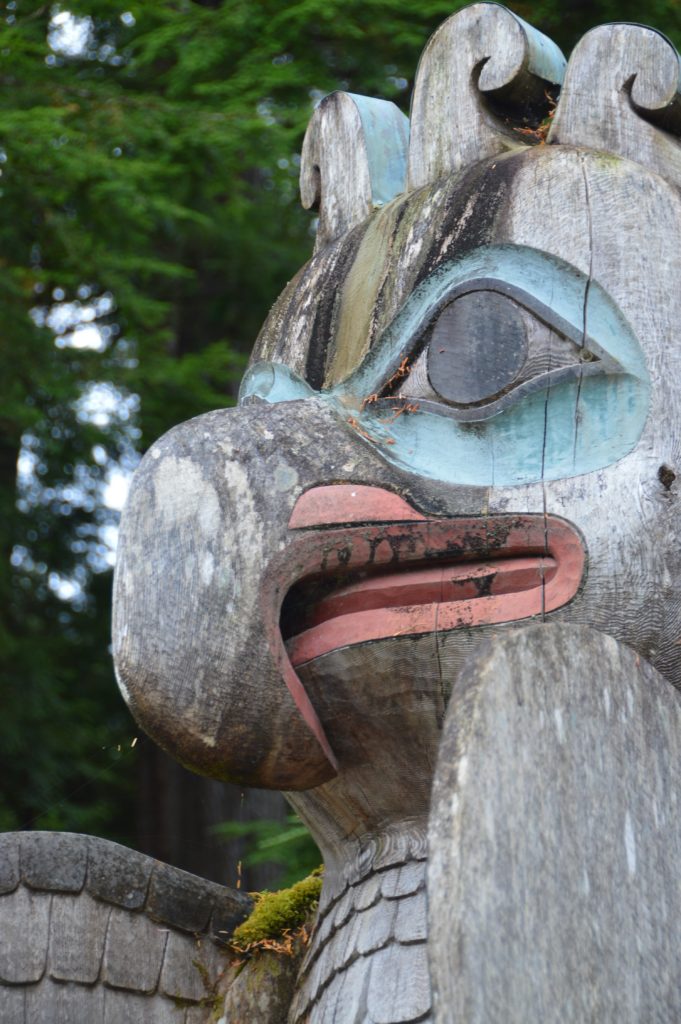
Writing Exploration: Write about your own observations of disjunction between the natural and human-built environments. How were these environments different or in conflict? And how did you experience your own participation in these paradoxes? What insights do you draw about your position with/in such ecological frameworks?
